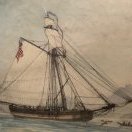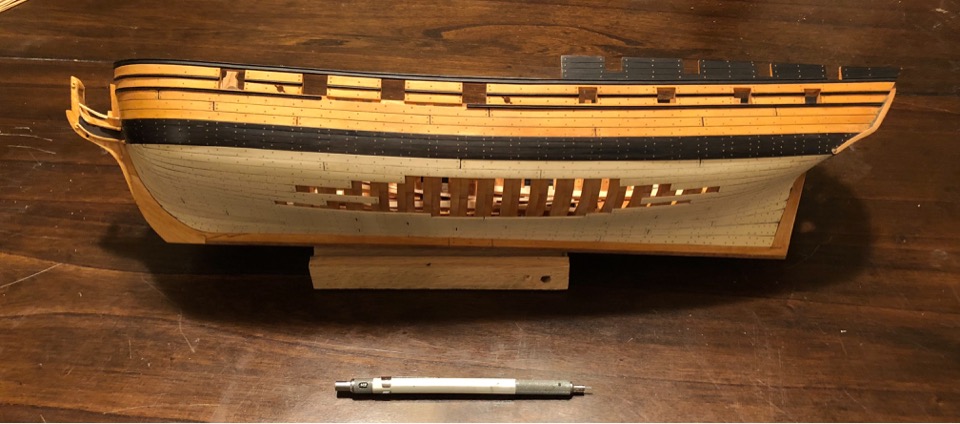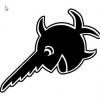-
Posts
375 -
Joined
-
Last visited
Profile Information
-
Gender
Male
-
Location
Camas Washington
-
Interests
Scale modeling. Particularly RC scale aircraft and 18th century ships of sail
Recent Profile Visitors
-
 Dowmer reacted to a post in a topic:
HMS Tiger 1747 by Siggi52 - 1:48 - 60 gun ship from NMM plans
Dowmer reacted to a post in a topic:
HMS Tiger 1747 by Siggi52 - 1:48 - 60 gun ship from NMM plans
-
 Dowmer reacted to a post in a topic:
HM Schooner Ballahoo by georgeband - Caldercraft - Haddock drawings
Dowmer reacted to a post in a topic:
HM Schooner Ballahoo by georgeband - Caldercraft - Haddock drawings
-
 Dowmer reacted to a post in a topic:
HMS Tiger 1747 by Siggi52 - 1:48 - 60 gun ship from NMM plans
Dowmer reacted to a post in a topic:
HMS Tiger 1747 by Siggi52 - 1:48 - 60 gun ship from NMM plans
-
 Dowmer reacted to a post in a topic:
HMS Kingfisher 1770 by Remcohe - 1/48 - English 14-Gun Sloop - POF
Dowmer reacted to a post in a topic:
HMS Kingfisher 1770 by Remcohe - 1/48 - English 14-Gun Sloop - POF
-
 Dowmer reacted to a post in a topic:
HMS Kingfisher 1770 by Remcohe - 1/48 - English 14-Gun Sloop - POF
Dowmer reacted to a post in a topic:
HMS Kingfisher 1770 by Remcohe - 1/48 - English 14-Gun Sloop - POF
-
 Dowmer reacted to a post in a topic:
HMS Bellerophon 1786 by AON – scale 1:64 – 74-gun 3rd Rate Man of War - Arrogant-Class
Dowmer reacted to a post in a topic:
HMS Bellerophon 1786 by AON – scale 1:64 – 74-gun 3rd Rate Man of War - Arrogant-Class
-
 Paul Le Wol reacted to a post in a topic:
HMS Tiger 1747 by Siggi52 - 1:48 - 60 gun ship from NMM plans
Paul Le Wol reacted to a post in a topic:
HMS Tiger 1747 by Siggi52 - 1:48 - 60 gun ship from NMM plans
-
 Keith Black reacted to a post in a topic:
HMS Tiger 1747 by Siggi52 - 1:48 - 60 gun ship from NMM plans
Keith Black reacted to a post in a topic:
HMS Tiger 1747 by Siggi52 - 1:48 - 60 gun ship from NMM plans
-
 Siggi52 reacted to a post in a topic:
HMS Tiger 1747 by Siggi52 - 1:48 - 60 gun ship from NMM plans
Siggi52 reacted to a post in a topic:
HMS Tiger 1747 by Siggi52 - 1:48 - 60 gun ship from NMM plans
-
 Dowmer reacted to a post in a topic:
HMS Tiger 1747 by Siggi52 - 1:48 - 60 gun ship from NMM plans
Dowmer reacted to a post in a topic:
HMS Tiger 1747 by Siggi52 - 1:48 - 60 gun ship from NMM plans
-
 Dowmer reacted to a post in a topic:
HM Schooner Ballahoo by georgeband - Caldercraft - Haddock drawings
Dowmer reacted to a post in a topic:
HM Schooner Ballahoo by georgeband - Caldercraft - Haddock drawings
-
 Dowmer reacted to a post in a topic:
HMS Tiger 1747 by Siggi52 - 1:48 - 60 gun ship from NMM plans
Dowmer reacted to a post in a topic:
HMS Tiger 1747 by Siggi52 - 1:48 - 60 gun ship from NMM plans
-
 Keith Black reacted to a post in a topic:
HMS Tiger 1747 by Siggi52 - 1:48 - 60 gun ship from NMM plans
Keith Black reacted to a post in a topic:
HMS Tiger 1747 by Siggi52 - 1:48 - 60 gun ship from NMM plans
-
 Paul Le Wol reacted to a post in a topic:
HMS Tiger 1747 by Siggi52 - 1:48 - 60 gun ship from NMM plans
Paul Le Wol reacted to a post in a topic:
HMS Tiger 1747 by Siggi52 - 1:48 - 60 gun ship from NMM plans
-
 Siggi52 reacted to a post in a topic:
HMS Tiger 1747 by Siggi52 - 1:48 - 60 gun ship from NMM plans
Siggi52 reacted to a post in a topic:
HMS Tiger 1747 by Siggi52 - 1:48 - 60 gun ship from NMM plans
-
 Dowmer reacted to a post in a topic:
HMS Tiger 1747 by Siggi52 - 1:48 - 60 gun ship from NMM plans
Dowmer reacted to a post in a topic:
HMS Tiger 1747 by Siggi52 - 1:48 - 60 gun ship from NMM plans
-
Congrats Phil, it is a very handsome ship. Most of the mistakes you mentioned will only be noticed by you. And we ourselves are the most critical observer. I have always been tempted to make a revenue cutter representative of the one “on station” up in Port Townsend Washington in the 19th century. If I do, I will definitely be re-reading this thread. But first, I have a Sloop to finish that has been sitting on my shelf just like yours for the past 25years. Life gets in the way but I will finish it some day. Thanks again for the journey. Cheers. 🍻
-
 Coyote_6 reacted to a post in a topic:
18 ft Cutter by - Dr PR - Vanguard Models - 1:64 FINISHED
Coyote_6 reacted to a post in a topic:
18 ft Cutter by - Dr PR - Vanguard Models - 1:64 FINISHED
-
Phil, my .02, if your ship was at sea, the boat was probably stowed inboard and only moved to the davits when nearing shore. If it is stowed on the davits and not being readied for use, then the oars would be lashed together in a bundle and secured inside the boat. Same for the rudder, stowed inside the boat to protect it from seas. If you were lowering the boat in an emergency you wouldn’t want to be searching for oars and rudder etc in a hurry. You would want them inside. To be honest, it probably had a canvas cover over it as well, so all that detail wouldn’t be seen. If you want to show the detail, then I would rig it as if they are getting ready to lower it away and use it for sea and anchor detail.
- 54 replies
-
- 18 ft cutter
- ships boat
-
(and 1 more)
Tagged with:
-
I agree Phil, I know that many of the ships of discovery in the Pacific Northwest had cutters and small boats carvel built due to the points you brought up. They were much easier to repair when they were far from civilization at the edge of the world under very rough and arduous conditions. Craig brought up some very good info and it is certainly correct as a generalization. However, builder, and different nationalities tended to add differences over time.
- 54 replies
-
- 18 ft cutter
- ships boat
-
(and 1 more)
Tagged with:
-
 AgesOfSail reacted to a post in a topic:
Albatros by Dr PR - FINISHED - Mantua - Scale 1:48 - Revenue Cutter kitbash about 1815
AgesOfSail reacted to a post in a topic:
Albatros by Dr PR - FINISHED - Mantua - Scale 1:48 - Revenue Cutter kitbash about 1815
-
If you need ideas on how to do a flag that is light and drapes naturally, Chuck Passaro on this site does a nice tutorial on how he does his flags and they look very realistic. It might be in his Cheerful cutter build. I followed his method for the small flag on my longboat. Link is in my signature. It turned out pretty well.
-
 John Ruy reacted to a post in a topic:
Albatros by Dr PR - FINISHED - Mantua - Scale 1:48 - Revenue Cutter kitbash about 1815
John Ruy reacted to a post in a topic:
Albatros by Dr PR - FINISHED - Mantua - Scale 1:48 - Revenue Cutter kitbash about 1815
-
Nice work Phil. You know the old saying, a scale model is never truly finished, you only stop adding details. The working gear (Anchors, foot ropes etc) is a good idea if you want to add that. I’d also suggest a flag and corresponding halliards too if you wish. btw, I know you are in Corvallis, did you ever make it over to the OSU ROTC building there? There is a ship model there.
-
I like Murphy’s Jest but I think giving it a name is appropriate. As long as you have with it a note as a representative 1800’s revenue cutter somewhere so when someone finds it in like 100 - 200 years from now they know. Lol.
-
Yes Phil, I second that. The sails look incredible. Appearance, color shape etc. definitely worth the fuss. Beautiful work.
-
Looking real nice Phil. It’s really coming together. You should be very proud. Question, shouldn’t the truss slings be served?
-
 davec reacted to a post in a topic:
La Créole 1827 by archjofo - Scale 1/48 - French corvette
davec reacted to a post in a topic:
La Créole 1827 by archjofo - Scale 1/48 - French corvette
-
Johann, the source material you posted from Atlas du Génie Maritime shows the hole for the stay opposite where you have it. I thought perhaps that was an error since the hole close to the edge would be fragile and prone to breakage. However I thought perhaps the stay hole is actually on the far edge like you have it but the angle for the sheaves are opposite direction because the bowline lines cross and enter at a different angle? So the example from Atlas du Génie Maritime, the aft side is actually the other side. Thoughts?
-
Alan, we all make frustrating mistakes. It’s how we learn and get better at our craft. I’m sure the re-work will be exceptional in the 2.0 version. btw, for what it’s worth, in the picture with the cannon poking through the port. Don’t forget the deck thickness as well will add to the height of the gun on the deck, if you want the gun centered in the port.
-

HMS ANSON 1781 by albert - 1/48 - 64 guns
Dowmer replied to albert's topic in - Build logs for subjects built 1751 - 1800
Truly beautiful workmanship Albert. What ships are they?
About us
Modelshipworld - Advancing Ship Modeling through Research
SSL Secured
Your security is important for us so this Website is SSL-Secured
NRG Mailing Address
Nautical Research Guild
237 South Lincoln Street
Westmont IL, 60559-1917
Model Ship World ® and the MSW logo are Registered Trademarks, and belong to the Nautical Research Guild (United States Patent and Trademark Office: No. 6,929,264 & No. 6,929,274, registered Dec. 20, 2022)
Helpful Links
About the NRG
If you enjoy building ship models that are historically accurate as well as beautiful, then The Nautical Research Guild (NRG) is just right for you.
The Guild is a non-profit educational organization whose mission is to “Advance Ship Modeling Through Research”. We provide support to our members in their efforts to raise the quality of their model ships.
The Nautical Research Guild has published our world-renowned quarterly magazine, The Nautical Research Journal, since 1955. The pages of the Journal are full of articles by accomplished ship modelers who show you how they create those exquisite details on their models, and by maritime historians who show you the correct details to build. The Journal is available in both print and digital editions. Go to the NRG web site (www.thenrg.org) to download a complimentary digital copy of the Journal. The NRG also publishes plan sets, books and compilations of back issues of the Journal and the former Ships in Scale and Model Ship Builder magazines.





